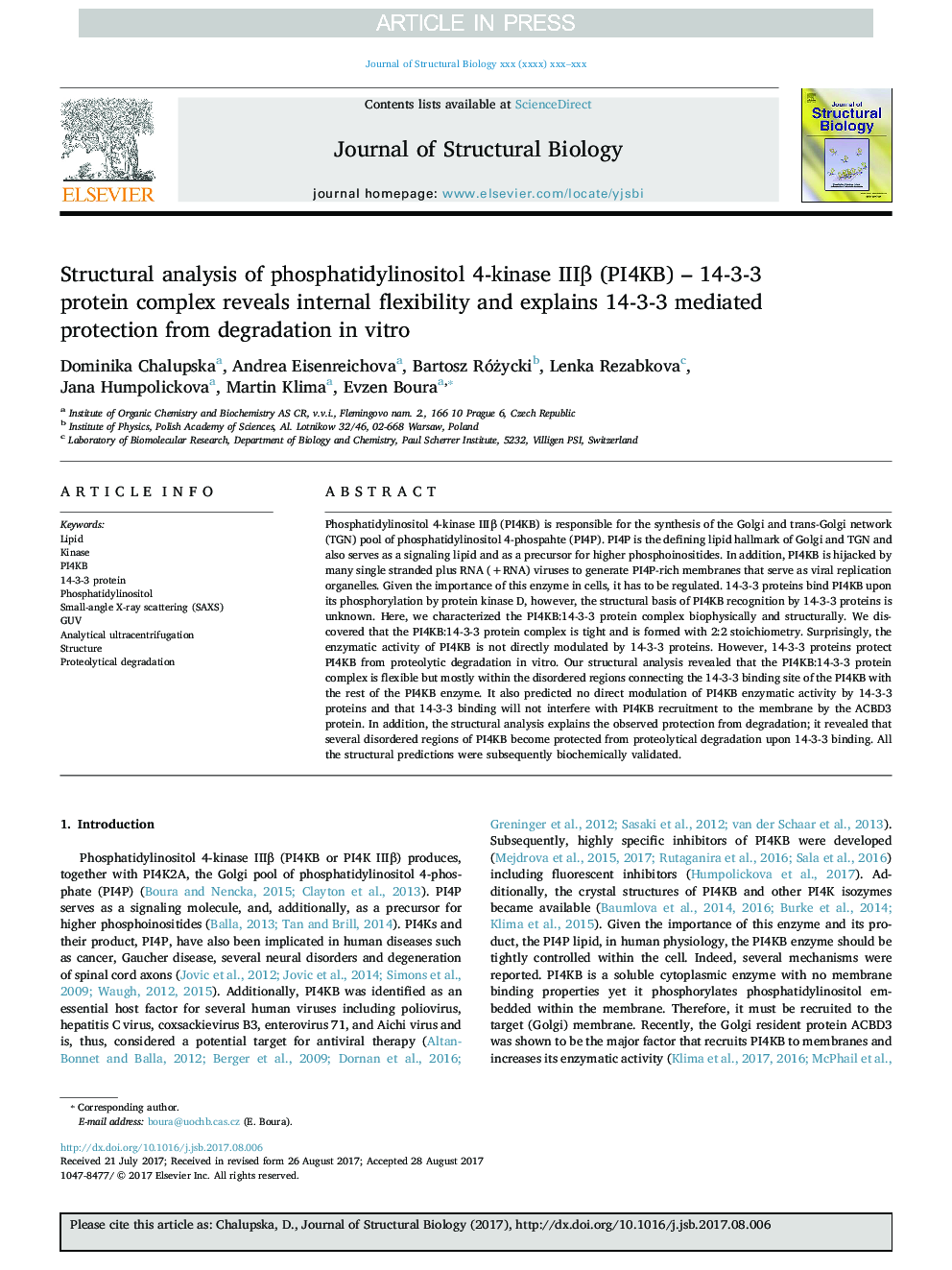| کد مقاله | کد نشریه | سال انتشار | مقاله انگلیسی | نسخه تمام متن |
|---|---|---|---|---|
| 8648316 | 1570445 | 2017 | 9 صفحه PDF | دانلود رایگان |
عنوان انگلیسی مقاله ISI
Structural analysis of phosphatidylinositol 4-kinase IIIβ (PI4KB) - 14-3-3 protein complex reveals internal flexibility and explains 14-3-3 mediated protection from degradation in vitro
دانلود مقاله + سفارش ترجمه
دانلود مقاله ISI انگلیسی
رایگان برای ایرانیان
کلمات کلیدی
موضوعات مرتبط
علوم زیستی و بیوفناوری
بیوشیمی، ژنتیک و زیست شناسی مولکولی
زیست شناسی مولکولی
پیش نمایش صفحه اول مقاله

چکیده انگلیسی
Phosphatidylinositol 4-kinase IIIβ (PI4KB) is responsible for the synthesis of the Golgi and trans-Golgi network (TGN) pool of phosphatidylinositol 4-phospahte (PI4P). PI4P is the defining lipid hallmark of Golgi and TGN and also serves as a signaling lipid and as a precursor for higher phosphoinositides. In addition, PI4KB is hijacked by many single stranded plus RNA (+RNA) viruses to generate PI4P-rich membranes that serve as viral replication organelles. Given the importance of this enzyme in cells, it has to be regulated. 14-3-3 proteins bind PI4KB upon its phosphorylation by protein kinase D, however, the structural basis of PI4KB recognition by 14-3-3 proteins is unknown. Here, we characterized the PI4KB:14-3-3 protein complex biophysically and structurally. We discovered that the PI4KB:14-3-3 protein complex is tight and is formed with 2:2 stoichiometry. Surprisingly, the enzymatic activity of PI4KB is not directly modulated by 14-3-3 proteins. However, 14-3-3 proteins protect PI4KB from proteolytic degradation in vitro. Our structural analysis revealed that the PI4KB:14-3-3 protein complex is flexible but mostly within the disordered regions connecting the 14-3-3 binding site of the PI4KB with the rest of the PI4KB enzyme. It also predicted no direct modulation of PI4KB enzymatic activity by 14-3-3 proteins and that 14-3-3 binding will not interfere with PI4KB recruitment to the membrane by the ACBD3 protein. In addition, the structural analysis explains the observed protection from degradation; it revealed that several disordered regions of PI4KB become protected from proteolytical degradation upon 14-3-3 binding. All the structural predictions were subsequently biochemically validated.
ناشر
Database: Elsevier - ScienceDirect (ساینس دایرکت)
Journal: Journal of Structural Biology - Volume 200, Issue 1, October 2017, Pages 36-44
Journal: Journal of Structural Biology - Volume 200, Issue 1, October 2017, Pages 36-44
نویسندگان
Dominika Chalupska, Andrea Eisenreichova, Bartosz Różycki, Lenka Rezabkova, Jana Humpolickova, Martin Klima, Evzen Boura,